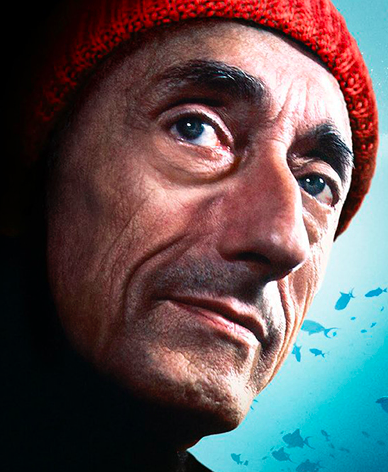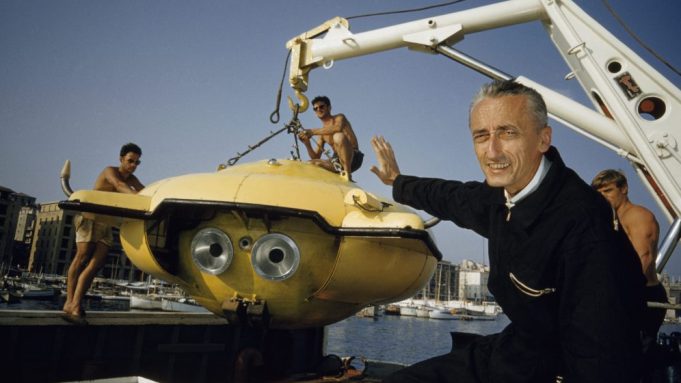
Jacques Yves Cousteau was a sailor, a scientist, an inventor, a filmmaker. His greatest romance was with the water realm. He was miserable outside the water: “It’s as if you’ve been introduced to heaven and then forced back to earth,” he said. And he was equally miserable if he didn’t make a film. He discovered the world of moving pictures at 12 years old, when he saw his first underwater film and understood the power of images. The following year he was already making his own films.
His extraordinary discoveries, his ingenious creations, and his epic existence have been captured in the National Geographic motion picture Becoming Cousteau, presented at DOC NYC. The film is directed by Academy Award Nominated and Emmy Winning Filmmaker Liz Garbus.
The ocean explorer, who spanned the tide with a misfit camera crew of divers, was a pioneer not only in exploring the oceans, but also in his environmental pursuits for the planet. He was a firm believer in experiencing the world first-hand, as he claimed: “Every explorer I have met has been driven by curiosity, a single-minded, insatiable and even jubilant need to know. We must go and see for ourselves.”
Cousteau’s coup de foudre with the water world was serendipitous. As a naval officer who got severely injured his recovery occurred through swimming, thanks to his friends, with whom he would later constitute “The Three Diving Musketeers”: Philippe Taillez and Frédéric Duman. From there on forth, every person who crossed his path would have been affected by his fascination for the element of water. His first wife, Simone Melchior, became passionate about the high sea adventures aboard the Calypso, to the point that she claimed: “I don’t have blood, I have sea water in my veins.” Also Jacques’ children shared his love for the aquatic world.
Cousteau’s desire to go deeper into the seven seas led him to inventions that would forever change the way we see the underwater world. He co-invented the “Aqualung” and revolutionised marine cinematography. In the beginning, a burgeoning oil industry backed his explorations paving the way for ocean exploitation, and Cousteau contributed to the wealth of Abu Dhabi. Shortly after, the television industry turned him into an international star. When the eco-advocate started to witness the destruction and degradation of the oceans, he created The Cousteau Society establishing protected areas for endangered species and advocating for the silent world under the surface.

The documentary has a rich assortment of exquisite old footage, capturing Cousteau’s personal moments, his interviews and the films he shot underwater, to divulge about an untouched domain to explore. Captain Cousteau did not like his movies to be labeled as documentaries, he considered them true adventure films: he was the John Ford or John Huston of the Ocean.
The most memorable of his cinematic works remains the 1956 The Silent World, that won the Palme d’Or and Oscar for Best Documentary. In Cannes, at the premiere, there was Picasso, who was utterly enchanted by the colours in the film. When the artist met the filmmaker, Cousteau gifted him with a coral that Picasso kept with him until his dying day.
The Cinematic Captain, whose hallmark was a red beanie, was truly a pioneer of the ecological movement. Cousteau opened Pandora’s Box, urging for an environmental intervention. He foresaw that the future generations would have paid the price of the misdeeds of the preceding ones. Thus, his films became a tool to deal with the fate of mankind.
Final Grade: B+

